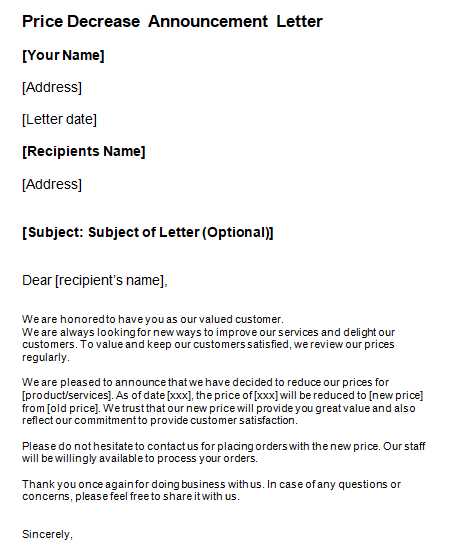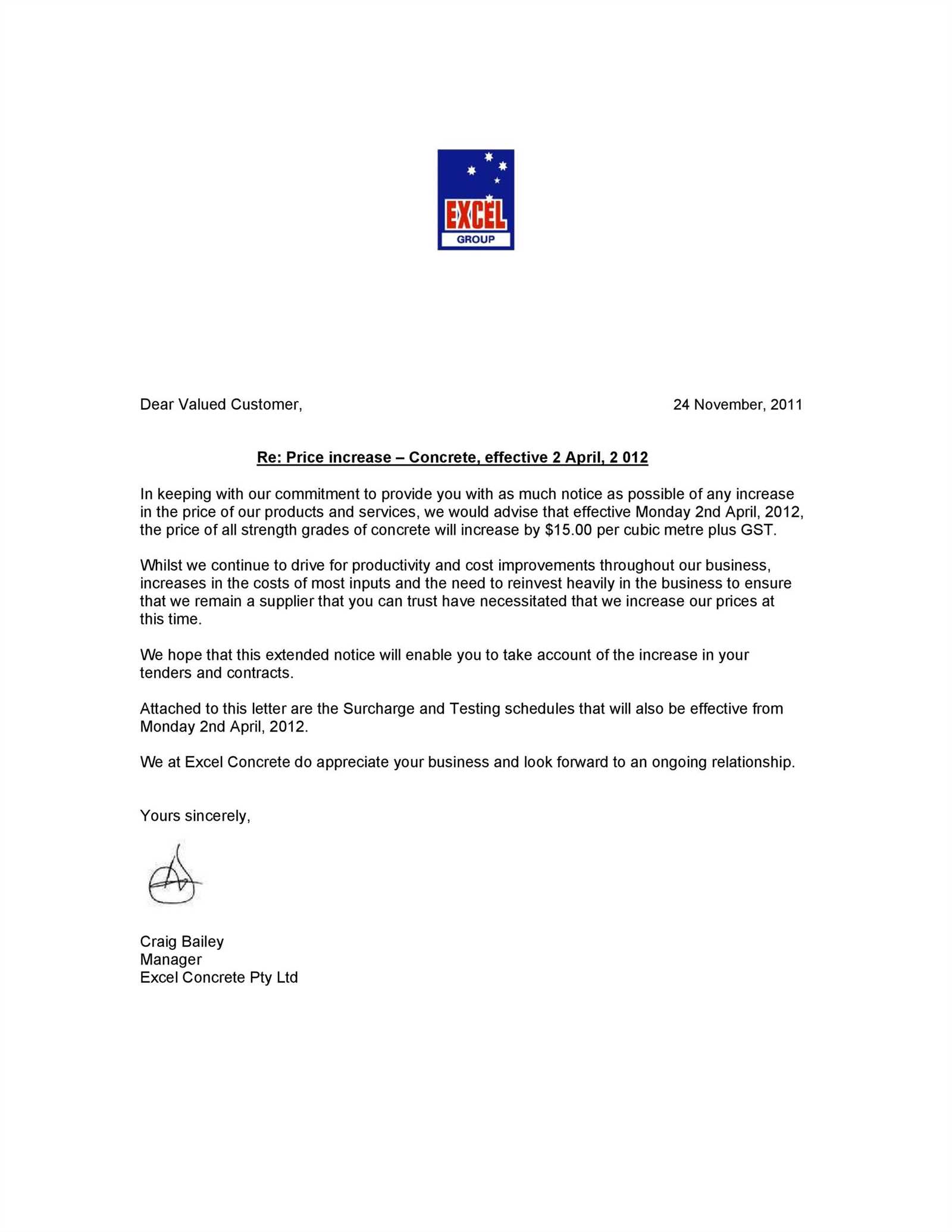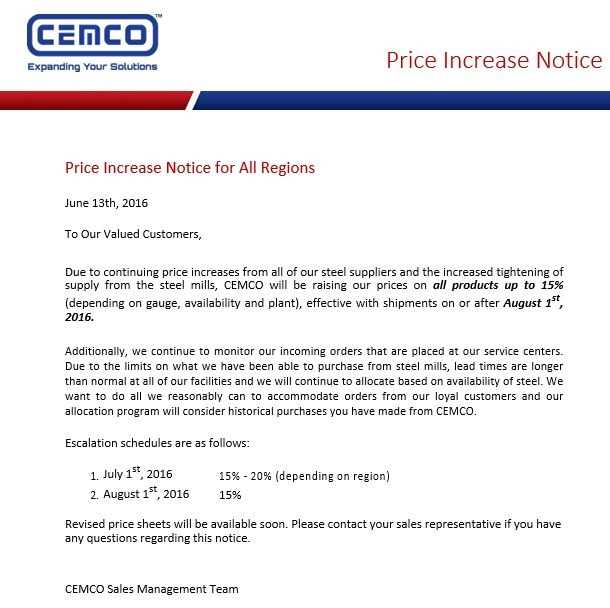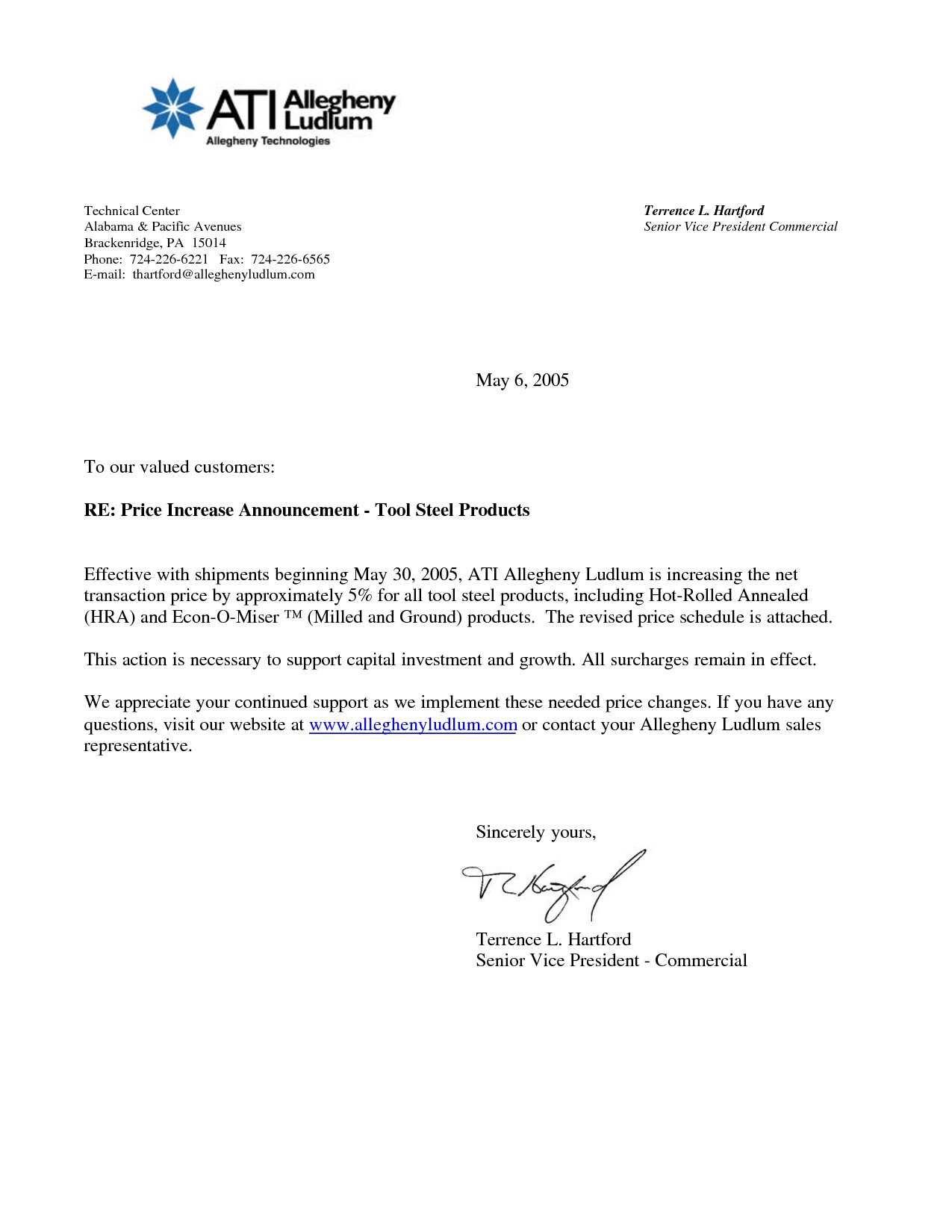How to Write a Price Increase Letter Template

Adjusting the cost of your goods or services can be a delicate task. Whether driven by market trends, inflation, or other factors, informing your customers about such modifications requires careful consideration. It’s essential to present this information in a way that is transparent, professional, and respectful to maintain strong relationships with your clients.
Crafting a clear and effective notice is crucial for ensuring that your message is understood and accepted. The goal is to provide customers with the necessary details while showing empathy for their potential concerns. A well-constructed communication can help ease any negative reactions and demonstrate your commitment to maintaining quality.
Effective communication not only explains the changes but also reassures clients about the value they continue to receive. Being honest and upfront helps to prevent misunderstandings and builds trust, ensuring that both parties remain satisfied despite the shift in terms.
Understanding the Need for Cost Adjustments
At some point, businesses may face the necessity to revise the charges for their offerings. This often arises due to various factors such as rising operational expenses, shifts in market demand, or the introduction of new regulations. Making such changes is a natural part of maintaining a viable and competitive operation, but it requires thoughtful planning to avoid alienating customers.
Factors Influencing Cost Adjustments
The reasons behind modifying the rates can vary widely. Rising material costs, changes in supply chain dynamics, or enhanced product features are some of the common drivers. External influences like economic conditions or competitor pricing strategies also play a significant role. It’s important to carefully assess these factors and ensure that any changes reflect the business’s evolving circumstances.
Impact on Customer Relationships

Customers value transparency and honesty when it comes to changes in service or product costs. Clear communication about why adjustments are necessary helps maintain trust and reduces potential backlash. It’s crucial to emphasize that these changes are made to preserve the quality and sustainability of the offerings. Addressing concerns promptly and offering solutions can go a long way in keeping clients satisfied.
When to Issue a Cost Adjustment Notification
Timing is crucial when informing customers about changes to fees or charges. Sending out a notification too early can lead to confusion, while waiting too long might leave clients feeling blindsided. Ideally, businesses should provide ample notice to allow customers to adjust their expectations or make necessary adjustments.
It’s best to communicate such changes well in advance of their implementation, ideally offering at least 30 days’ notice. This allows customers time to evaluate how the adjustment will affect them and decide whether to continue with the service or purchase. Clear communication during this period is essential to ensure that clients understand the reasons behind the shift and the value they continue to receive.
Consider market conditions and customer loyalty when determining the optimal timing. Regular customers may appreciate early notice, while new clients might only need a brief update. Adapting the notification timeline to your customer base ensures a more positive response to the change.
Essential Components of a Cost Notification

When informing clients about adjustments to their fees or charges, clarity and structure are key. A well-crafted communication includes several vital elements that ensure the message is understood and received positively. These components help convey the necessary information while maintaining professionalism and transparency.
Clear Explanation of the Change
It’s important to directly address what has changed and why the adjustment is taking place. Customers should understand the reasoning behind the modification, whether it’s due to rising operational costs, changes in the market, or other factors. Providing this context helps manage expectations and minimizes misunderstandings.
Effective Timing and Delivery
Proper timing is essential for ensuring the message reaches your customers with enough lead time. This allows them to adjust accordingly, whether it’s budgeting for the change or planning for the new conditions. Additionally, using a respectful and professional tone helps maintain a positive relationship, even during challenging communications.
By including these key components, businesses can communicate adjustments effectively while maintaining client trust and minimizing dissatisfaction.
Effective Approaches for Clear Communication
When communicating changes in fees or conditions to customers, clarity is paramount. A direct and transparent approach fosters trust and reduces confusion. By following best practices in communication, businesses can ensure that the message is well received and understood.
Key Practices for Clear Messaging
- Be direct and concise: Avoid unnecessary jargon or overly complex explanations. State the facts clearly and in simple language.
- Provide context: Explain the reasons behind the changes so customers understand the necessity of the adjustments.
- Show empathy: Acknowledge any potential inconvenience and offer solutions where possible.
- Use positive language: Frame the communication in a way that highlights the continued value customers will receive.
Choosing the Right Medium
Selecting the appropriate channel for delivering your message is also crucial. Some methods of communication may be more effective depending on your audience and the nature of the change. Consider the following:
- Email: Ideal for detailed communication and keeping a record of the notification.
- Direct mail: Useful for formal announcements or when targeting customers who prefer physical communication.
- In-person or phone communication: Best for high-value clients or sensitive situations that may require immediate feedback or further clarification.
By following these strategies, you can ensure that your message is clear, well-received, and ultimately minimizes any negative impact on your customer relationships.
Addressing Customer Concerns Properly
When informing customers about changes to their charges or terms, it’s important to anticipate and address any concerns they may have. Clear, empathetic responses can help mitigate dissatisfaction and build long-term trust. The way in which you address these concerns plays a crucial role in maintaining positive relationships with your clients.
Customer concerns may arise from various aspects, including the necessity of the adjustment, its impact on their budget, or the perception of the value they receive. To address these effectively, businesses must listen attentively and respond in a way that demonstrates understanding and offers solutions.
| Customer Concern | Suggested Approach |
|---|---|
| Feeling blindsided by the change | Provide ample notice and explain the reasons behind the adjustment in detail. |
| Concern about affordability | Offer flexible payment options or discounts for loyal customers if possible. |
| Questioning the value of the offering | Emphasize improvements or ongoing quality that justify the modification. |
| Negative feedback or frustration | Listen to the concerns without interrupting and offer reassurance or potential alternatives. |
By thoughtfully addressing these concerns and offering practical solutions, businesses can ease customer anxieties and reinforce their commitment to providing excellent service, even during times of change.
Preserving Customer Confidence After Changes
Maintaining customer trust and satisfaction after implementing adjustments to terms or conditions is essential for long-term business success. It is important to reassure customers that the value they receive continues to meet or exceed expectations, even when there are alterations. Effective communication and proactive support can help preserve a positive relationship despite these changes.
Continued Value and Quality

Emphasize the ongoing value that customers receive, even in light of the modifications. Highlight improvements, enhanced features, or continued high standards that justify the changes. Reminding clients of the benefits they enjoy will help reinforce their decision to remain loyal to your business.
Maintaining Open Channels for Feedback
After communicating the adjustments, it’s vital to remain accessible for questions and concerns. Providing clear channels for customer feedback and being responsive to their needs shows commitment to their satisfaction. When customers feel heard and valued, they are more likely to continue their relationship with your company.
By proactively demonstrating value and ensuring open lines of communication, businesses can foster long-term customer loyalty and minimize any negative impact from changes.